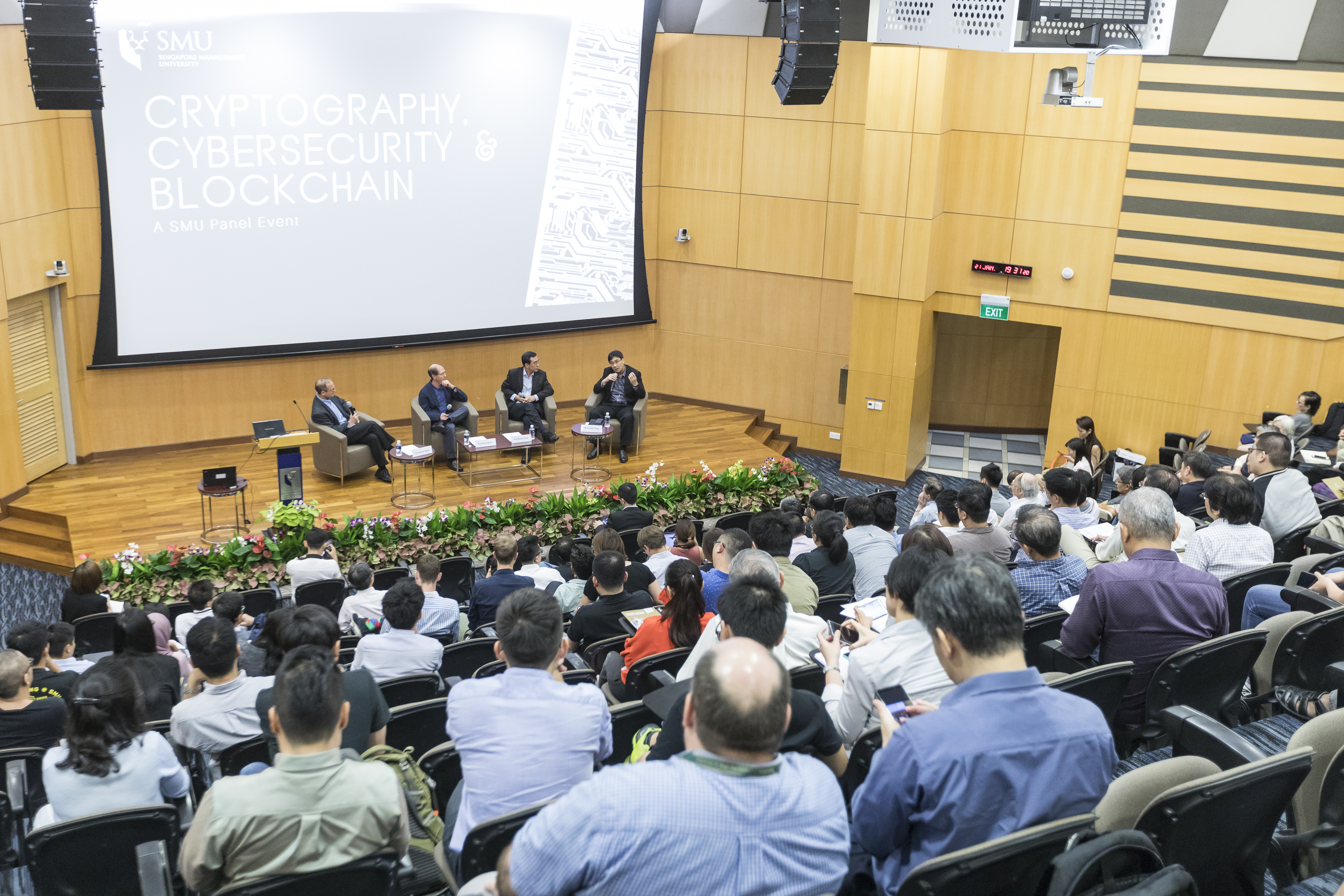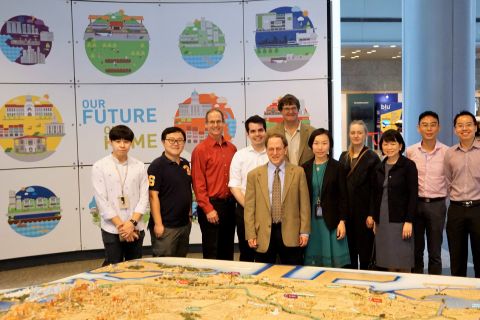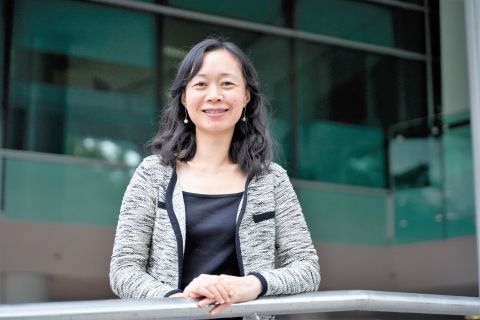
By Kareyst Lin
SMU Office of Research & Tech Transfer – “I will let you in on a big secret – up until this point, blockchain technologies have not lived up to their potential,” said Professor Silvio Micali, Ford Professor of Engineering at the Massachusetts Institute of Technology and co-founder of blockchain platform Algorand. “However, today, the industry has reached an inflection point, and we’re about to see the enormous promise of this technology in action.”
The 2012 Turing Award winner was speaking at a public event on 21 January 2019, organised by Singapore Management University (SMU), in conjunction with the Singapore’s National Research Foundation Global Young Scientists Summit 2019.
The huge amount of buzz about the applications of blockchain meant that the auditorium was packed to hear Professor Micali’s talk on Algorand, as well as a panel discussion moderated by Professor Steven Miller, SMU’s Vice Provost of Research, featuring Professor Micali; Mr Damien Pang, Director and Head of FinTech Infrastructure Office & FinTech Ecosystem Office at the Monetary Authority of Singapore (MAS); and Professor Robert Deng, AXA Chair Professor of Cybersecurity and Director of SMU’s Secure Mobile Centre.
The promise of blockchain
“It is no secret that we love blockchains, but why?” asked Professor Micali. “By design, the blockchain is a tamperproof database that is transparent and secure, and its value lies in its ability to generate trust between two people who don’t even know each other.”
For the uninitiated, Professor Micali explained that a blockchain is a continuous and growing chain of records (called blocks) that are linked using cryptography. Each block is a record of a transaction or an asset. Being decentralised and distributed, blocks of information are stored in an identical manner across the network. Since single records cannot be altered retroactively without the alteration of all subsequent blocks, the blockchain cannot be controlled by any single entity, and has no single point of failure.
But where does this technology currently exist as promised? According to Professor Micali, “Nowhere yet!” Until now, blockchain has been an aspiration – a mere technical construct – because its potential has been limited by an issue known as the “blockchain trilemma,” a term coined by Vitalik Buterin, founder of Ethereum.
The blockchain trilemma
Professor Micali explained that there are three properties essential to blockchain: decentralisation, scalability and security. Existing blockchain technology has been unable to offer all three attributes at the same time. The seemingly intractable trilemma has limited what blockchain can do and has made it difficult to achieve mainstream attraction and adoption.
“When we think about the three elements, security is non-negotiable, obviously. We can’t just eliminate it because that would defeat the purpose of the entire system,” he said. “Meanwhile, decentralisation is an integral part of security in a blockchain system, as it is what prevents the system from being taken over by a single party,” he added. “That tends to result in sacrificing scalability and speed.”
That is not an optimal solution. Take Bitcoin for example, Professor Micali said. On average, Bitcoin supports about 7 transactions per second. This is quite a far cry from what VisaNet, the world’s largest electronic payment network, is capable of: an average of 1,600 transactions per second (tps) and 20,000 tps at its peak. For cryptocurrency to go mainstream, these fundamental technological issues will need to be solved, he said.
Algorand, Professor Micali’s blockchain platform, exists precisely to solve those issues. By pushing the limits of blockchain through technological breakthroughs like its pure proof of stake algorithm based on a Byzantine agreement protocol, Professor Micali has developed Algorand exactly in order to solve the trilemma, so as to finally bring forth a blockchain platform that is secure, decentralized and will scale to billions of users.
No one-size-fits-all when it comes to blockchain
While the trilemma has yet to be solved, it doesn’t negate the potential that distributed ledger technology holds, commented Mr Pang, from the Monetary Authority of Singapore.
“We shouldn’t be expecting blockchain to provide us with a one-size-fits-all solution to our problems,” he added. “The way I look at it, there will be specific blockchains or distributed ledger platforms that are more specialised for certain functions such as verification, and we can deploy the technology for that area. So I would say there are opportunities for these emerging ideas to find their applications.”
Providing the analogy of a supercar, Mr Pang said that no one-size-fits-all supercar can cater to consumers’ needs; rather, a diversity of car models may better serve individual demands. In the same way, specialised blockchains are being developed for specific use cases, and there has to be an organic space for all these different platforms to find their niches.
Professor Deng concurred, explaining that blockchain was one of the few technologies that began with a use case – Satoshi Nakamoto’s whitepaper described the protocol for a Bitcoin digital currency – and subsequently drove research into the technology behind it. Instead of holding blockchain to a strict ideal, it is more important to find the context in which blockchains can be used and optimised, he said.
To conclude the panel discussion, Professor Miller shared, “Over the past few years, industries have been relentless in finding innovative ways to apply distributed ledger to solve practical, business relevant problems. Moving forward, we can expect to see blockchain evolve and diversify into a wide range of specific use cases that best suit the needs of businesses and organisations everywhere.”
Back to Research@SMU February 2019 Issue
See More News
Want to see more of SMU Research?
Sign up for Research@SMU e-newslettter to know more about our research and research-related events!
If you would like to remove yourself from all our mailing list, please visit https://eservices.smu.edu.sg/internet/DNC/Default.aspx

